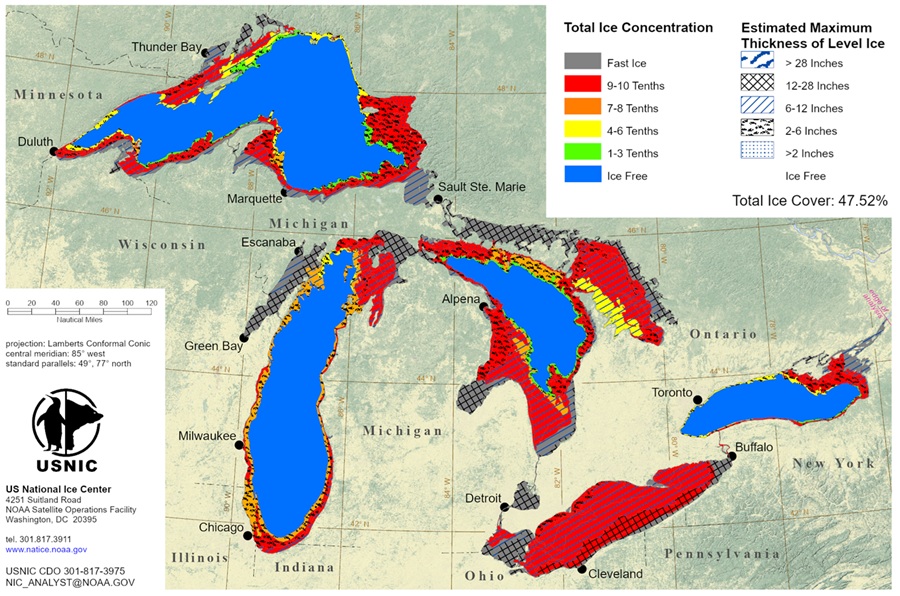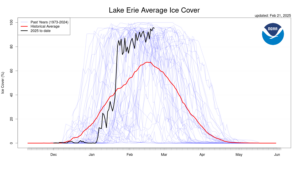
According to NOAA, Lake Erie is almost entirely iced over while the lakes overall are 52.2% covered by ice as of yesterday’s observations. Overall, the amount of ice on the Great Lakes, which typically peaks this time of year, is tracking a bit above normal. Compared to last year’s paltry ice cover, 2025 is tracking significantly higher. But when looking at overall ice cover trends over the last several decades, there really is no distinct pattern or trend; ice coverage is volatile and changes with each year, with the last few decades being no dramatically different from other decades.

Detailed ice records have been made by NOAA since 1973. Since that time, many years have seen significant ice coverage or lack thereof. In 1979, the Great Lakes were 94.7% covered in ice, the most in any measured year. In 2002, the lakes only had 11.9% ice cover, the least of any measured year.
Lake Erie is the most frequently ice-covered Great Lake. It achieved 100% coverage in 1978, 1979, and 1996. In 1998, mild weather prevented much ice formation and only 5.4% of the lake was ice covered.

NOAA says that maximum ice cover on the lower lakes like Lake Erie normally occurs between mid-February and end of February. Maximum ice cover on the upper lakes like Lake Superior normally occurs between end of February and early March.
Ice extent plays a part in determining water temperature in the lakes later in the year, as incoming heat will have to melt the ice before it warms the water below. However, meteorological conditions and heat storage in the lakes are also critical components to the thermal cycle in the lakes. Even so, NOAA says that more ice now doesn’t necessarily mean cooler water and air temperatures for the upcoming summer seasons.